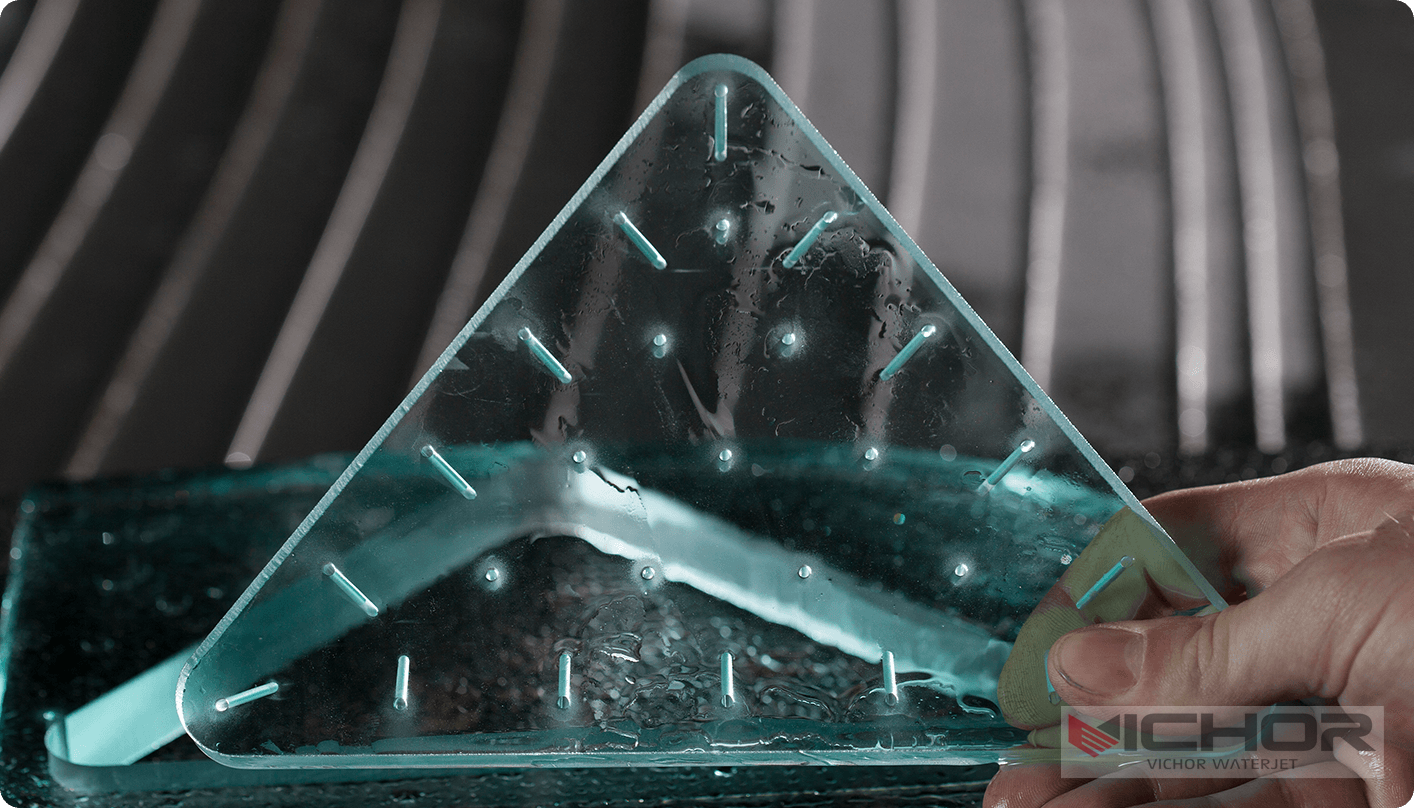
Mini Water Jet: Transforming Precision Cutting with Smart Applications and Selection Tips
In today’s fast-paced industrial and creative landscapes, the demand for efficient, precise, and versatile cutting tools has never been higher. Among these, the mini water jet has emerged as a game-changer, offering unparalleled accuracy and flexibility for a wide range of tasks. Whether you’re in manufacturing, prototyping, or even arts and crafts, understanding how to leverage this technology can significantly boost productivity and quality. This article dives deep into the world of mini water jets, covering their applications, benefits, and a practical guide to selecting the right model for your needs. We’ll also explore why brands like VICHOR are making waves in this niche, ensuring you make an informed decision. By the end, you’ll have a clear roadmap to integrating a mini water jet into your workflow, along with answers to common questions that often arise.
What Exactly is a Mini Water Jet?
A mini water jet is a compact version of traditional water jet cutting systems, designed to deliver high-pressure water streams—often mixed with abrasives—for precise cutting of various materials. Unlike larger industrial models, these smaller units are ideal for workshops, small businesses, and hobbyists who need accuracy without the bulk. The core technology involves pumping water at extreme pressures, typically ranging from 30,000 to 90,000 PSI, through a narrow nozzle. This creates a focused stream that can slice through metals, ceramics, glass, and composites with minimal heat-affected zones. The rise of the mini water jet has democratized access to advanced cutting capabilities, making it a popular choice for applications where space and budget are constraints. For instance, many users appreciate how a mini water jet can handle intricate designs without compromising on speed or quality, thanks to innovations from companies like VICHOR, which specialize in user-friendly models.
Diverse Applications of Mini Water Jets Across Industries
The versatility of the mini water jet is one of its biggest selling points. In manufacturing, these tools are used for prototyping and small-batch production, allowing engineers to cut complex shapes from materials like aluminum or titanium with high precision. The automotive industry, for example, relies on mini water jets for crafting custom parts and trimming components without generating hazardous dust or fumes. Similarly, in the aerospace sector, the ability to cut lightweight composites without delamination makes the mini water jet indispensable. Beyond industrial settings, artists and designers have adopted mini water jets for creating detailed sculptures, jewelry, and architectural elements. The technology’s cold-cutting process prevents material distortion, which is crucial for delicate projects. Even in medical device manufacturing, mini water jets ensure sterile, burr-free cuts for instruments and implants. This broad applicability highlights why investing in a reliable mini water jet can open doors to innovation and efficiency.
Key Benefits of Incorporating a Mini Water Jet into Your Toolkit
Adopting a mini water jet comes with a host of advantages that set it apart from other cutting methods. First and foremost, its precision is unmatched—capable of achieving tolerances as tight as 0.1 mm, it reduces material waste and rework. Unlike laser or plasma cutters, a mini water jet doesn’t generate heat, eliminating risks of thermal distortion or hardening in sensitive materials. This makes it ideal for cutting heat-sensitive substrates like plastics or layered composites. Additionally, mini water jets are environmentally friendly, as they use water and natural abrasives, minimizing chemical emissions and waste. Their compact size means they fit easily into smaller workshops, and many models, including those from VICHOR, offer plug-and-play functionality for quick setup. Maintenance is relatively straightforward, with routine checks on pumps and nozzles ensuring long-term reliability. Overall, the mini water jet combines efficiency, safety, and adaptability, making it a smart investment for anyone seeking to enhance their cutting capabilities.
How to Choose the Right Mini Water Jet for Your Needs
Selecting the perfect mini water jet requires careful consideration of several factors to match your specific requirements. Start by assessing the materials you’ll be cutting—softer materials like foam or rubber might only need a pure water jet, while harder metals may require an abrasive mini water jet system. Next, evaluate the cutting speed and accuracy; higher pressure models (e.g., 60,000 PSI and above) offer faster cuts but may come at a higher cost. Size and portability are also key; if you have limited space, opt for a benchtop mini water jet that doesn’t sacrifice power. Budget is another critical aspect—entry-level models can start from a few thousand dollars, while advanced systems with automation features might cost more. Don’t forget to research brands for reliability and support; VICHOR, for instance, is known for its durable mini water jet machines that come with comprehensive warranties and customer service. Finally, consider additional features like software integration for CAD designs or safety enclosures to protect operators. By weighing these elements, you can find a mini water jet that aligns with your workflow and goals.
Why VICHOR Stands Out in the Mini Water Jet Market
When it comes to mini water jets, VICHOR has carved a niche for itself by focusing on innovation and user-centric design. Their machines are engineered to deliver consistent performance, with features like adjustable pressure settings and easy-to-clean components that appeal to both beginners and professionals. VICHOR’s mini water jet models often include advanced filtration systems to prolong pump life, reducing downtime and maintenance costs. What sets them apart is their commitment to affordability without compromising on quality—many users report that VICHOR mini water jets offer a great balance of precision and durability. Moreover, the brand provides extensive resources, such as online tutorials and community forums, to help users maximize their equipment. If you’re looking for a reliable mini water jet that won’t break the bank, VICHOR is definitely a brand to consider, as it embodies the evolution of compact water jet technology.

Practical Maintenance Tips to Extend Your Mini Water Jet’s Lifespan
To keep your mini water jet running smoothly, regular maintenance is essential. Begin with daily checks on the water quality and abrasive levels, as contaminants can clog the nozzle and reduce cutting efficiency. Clean the nozzle and mixing tube weekly to prevent buildup, and inspect high-pressure seals for wear—replacing them promptly can avoid costly repairs. For pumps, follow the manufacturer’s guidelines; VICHOR, for example, recommends flushing the system after each use to prevent corrosion. Storage is also important; keep your mini water jet in a dry, temperature-controlled environment to avoid damage from humidity. By adopting these habits, you’ll not only extend the life of your mini water jet but also maintain its precision over time, ensuring it remains a valuable asset in your toolkit.
Integrating a Mini Water Jet into Your Workflow: Best Practices
Successfully incorporating a mini water jet into your operations involves more than just buying the equipment. Start by training operators on safe usage, including handling high-pressure components and wearing protective gear. Optimize your designs for water jet cutting by accounting for kerf width—the material removed during cutting—to achieve accurate dimensions. Many users find that using CAD software compatible with their mini water jet, like those supported by VICHOR systems, streamlines the process from design to production. Additionally, schedule regular performance reviews to identify areas for improvement, such as adjusting cutting speeds for different materials. By following these best practices, you can maximize the ROI of your mini water jet and foster a culture of innovation in your workspace.
Frequently Asked Questions About Mini Water Jets
Q1: What materials can a mini water jet effectively cut?
A1: A mini water jet is highly versatile and can cut a wide range of materials, including metals like steel and aluminum, ceramics, glass, stone, plastics, and composites. Its cold-cutting process prevents heat damage, making it suitable for sensitive materials that might warp under other methods.
Q2: How does a mini water jet compare to laser cutting in terms of cost and efficiency?
A2: While laser cutters are faster for thin materials, mini water jets excel in cutting thicker, reflective, or heat-sensitive substrates without additional costs for gas or lenses. Initial investment for a mini water jet might be higher, but it often leads to savings in material waste and maintenance over time.
Q3: What safety precautions should I take when operating a mini water jet?
A3: Always wear safety goggles and gloves to protect against high-pressure streams and debris. Ensure the machine is equipped with emergency stop buttons and enclosures. Regularly inspect hoses and fittings for leaks, and follow manufacturer guidelines—brands like VICHOR include detailed safety manuals with their mini water jet models.
Q4: Can I use a mini water jet for underwater cutting or in wet environments?
A4: Yes, many mini water jets are designed for underwater use to reduce noise and splash. However, check the specific model’s IP rating and manufacturer recommendations to ensure compatibility with wet conditions, as improper use could damage the electrical components.
Q5: How often should I replace the abrasive and nozzle in a mini water jet?
A5: Nozzle replacement depends on usage, but typically, it’s needed every 50-100 hours of operation for optimal performance. Abrasive, like garnet, should be replenished based on the cutting volume—monitor the abrasive delivery system regularly to avoid interruptions. Brands such as VICHOR often provide maintenance schedules tailored to their mini water jet systems.
In conclusion, the mini water jet is a powerful tool that bridges the gap between precision and accessibility. By understanding its applications, benefits, and selection criteria, you can harness its full potential for your projects. With brands like VICHOR leading the way in reliability and innovation, there’s never been a better time to explore what a mini water jet can do for you. Remember, investing in the right equipment and maintenance will pay off in enhanced creativity and productivity.
continue reading



